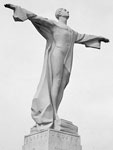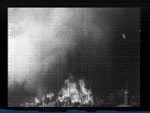The Chicago History Museum presents Chicago, IL, and select national history. Permanent exhibits include Chicago economy, disasters, community life, innovations, leisure, recreation, and history dioramas. Collections consist of more than 22,000,000 prints, photographs, architectural artifacts, archival documents, published materials, paintings, sculptures, oral histories, films, costumes, decorative arts, and industrial artifacts.
The museum offers traditional and interactive exhibits, media presentations, a sensory exhibit for children and families, hands-on activity stations, guided tours, self-guided tours, history tours by boat, step-on guides, 45-minute audio tours, Saturday walking tours, film screenings, teacher workshops, and research library access. Audio tours are available in English and Spanish. The website offers educational games, an artifact spotlight, virtual exhibits, a teacher's guide, unit plans, pre- and post-visit activities, lesson plans, and a curriculum.

